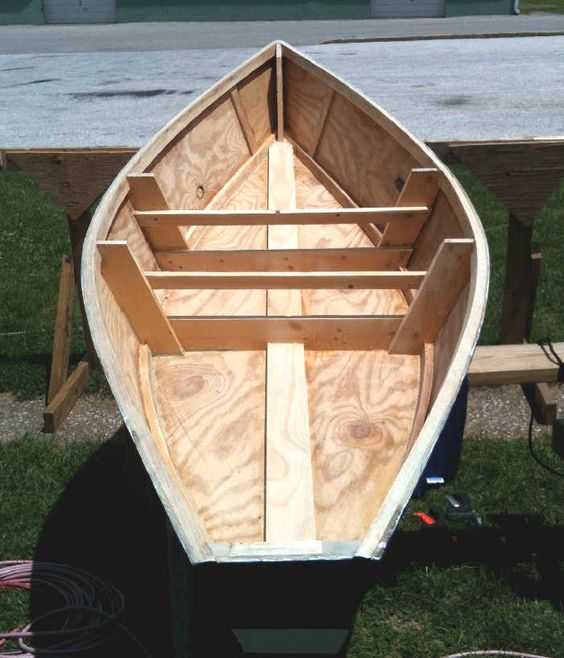
Building a Lightweight Duck Boat with Simple Wood Plans
A duck boat is a versatile vessel, ideal for navigating shallow waters, traversing marshes, and providing a stable platform for hunting waterfowl. While commercially manufactured duck boats are readily available, constructing one from scratch offers a rewarding experience and allows for customization to perfectly suit your needs. This article will guide you through building a lightweight duck boat using simple wood plans, equipping you with the knowledge and steps to embark on your own woodworking adventure.
Materials and Tools
Before diving into construction, ensure you have the necessary materials and tools. This list includes:
Materials:
- Plywood (Marine Grade): 1/4†or 3/8†thick. Choose a waterproof and durable plywood for optimal longevity.
- Lumber (Cedar or Redwood): Select lightweight and rot-resistant wood for the frame, gunwales, and seats.
- Epoxy Resin and Hardener:
- Fiberglass Cloth:
- Wood Screws:
- Marine-Grade Fasteners:
- Paint (Optional): For protection and aesthetics, consider a durable paint.
- Duck Boat Plans: Obtain detailed blueprints outlining the dimensions, angles, and layout of the boat.
Tools:
- Circular Saw:
- Jigsaw:
- Drill:
- Sandpaper (Various grits):
- Clamps:
- Measuring Tape:
- Level:
- Safety Glasses:
- Work Gloves:
- Dust Mask:
Step-by-Step Construction Guide
The following steps provide a detailed guide to building your duck boat:
Step 1: Assemble the Frame
- Using the plans as your guide, cut the lumber to the specified lengths for the boat’s frame. This includes the keel, ribs, and transom.
- Join the frame pieces together using wood screws and epoxy, ensuring tight and secure connections. Use clamps to hold the frame in place during the curing process.
Step 2: Construct the Hull
- Cut the plywood panels to match the hull shape outlined in the plans. Use a circular saw or jigsaw for precise cuts.
- Attach the plywood panels to the frame using screws and epoxy, ensuring a watertight seal. For added strength, use fiberglass cloth and epoxy to reinforce the hull.
Step 3: Create the Gunwales and Seats
- Cut the lumber for the gunwales and seats to the specified dimensions. These elements provide strength and structure to the boat, as well as comfortable seating.
- Attach the gunwales to the hull using screws and epoxy. Ensure they are level and securely fastened. Construct the seats using the same method.
Step 4: Build the Bow and Stern
- Construct the bow and stern by shaping plywood panels and attaching them to the frame using screws and epoxy.
- Ensure the bow and stern are properly aligned with the rest of the hull, creating a streamlined and functional design.
Step 5: Add Finishing Touches
- Once the boat is fully assembled, sand the surfaces to a smooth finish. This eliminates any rough edges and prepares the boat for paint or varnish.
- Apply a layer of epoxy resin and fiberglass cloth to seal the boat and enhance its durability. This also adds a protective layer against water damage.
- Paint or varnish the boat according to your preference. Use a durable marine-grade paint to protect the wood and enhance its aesthetics.
Tips for Building a Lightweight Duck Boat
Consider these additional tips for building a lightweight and durable duck boat:
- Choose Lightweight Materials: Opt for cedar or redwood for the frame and plywood for the hull. These materials provide strength while minimizing weight.
- Minimize Weight: Avoid using thick pieces of lumber. Consider using thinner boards for the frame and hull to reduce overall weight.
- Use Proper Fasteners: Choose marine-grade fasteners for all connections, ensuring they are resistant to corrosion and capable of withstanding the harsh conditions of water exposure.
- Add a Motor Mount: Include a motor mount to accommodate a small outboard motor. This allows for increased speed and maneuverability while navigating open water.
- Consider a Drain Plug: Installing a drain plug helps remove water that may accumulate inside the boat, preventing rot and decay.
Safety Considerations
Remember to prioritize safety during the construction process:
- Wear Protective Gear: Always use safety glasses, work gloves, and a dust mask to protect yourself from potential hazards.
- Use Sharp Tools Safely: Handle power tools and sharp objects with caution to prevent accidents.
- Follow Instructions: Adhere to the instructions provided with the plans and materials. This ensures proper construction and safety.
- Test the Boat Thoroughly: Before taking the boat out on the water, test it thoroughly to ensure stability and watertightness.
Conclusion
Building a lightweight duck boat using simple wood plans is a rewarding project that allows you to create a customized and durable vessel for your hunting adventures. By following the detailed instructions and incorporating the tips provided, you can embark on your own woodworking journey and achieve a satisfying outcome. Remember to prioritize safety throughout the process and enjoy the satisfaction of crafting your own duck boat from scratch.

0 comments:
Post a Comment
Note: Only a member of this blog may post a comment.